Meet Nigel Raynard, a seasoned Tesla owner from Australia who is now cruising over a whopping 700,000 kilometers on his 2018 Model S. Imagine driving that far without burning a drop of traditional fuel!
This is not the first time Nigel is making headlines as back in July 2021, people started talking about Nigel when his car hit 400,000 km. It was kind of a big deal because his Tesla’s original brake pads were still holding strong, unlike regular cars.
Even Elon Musk, the boss of EV, gave Nigel a nod for his achievement. Recently, Nigel got a new battery pack, and his car is on its second set of brake pads.
But why are we still talking about him?
Well, 435,000 miles is a huge number for an EV. What’s mind-blowing is that he says he’s saving about $20,000 every year on fuel and repairs. Let’s dig deeper to know as much as we can, shall we?
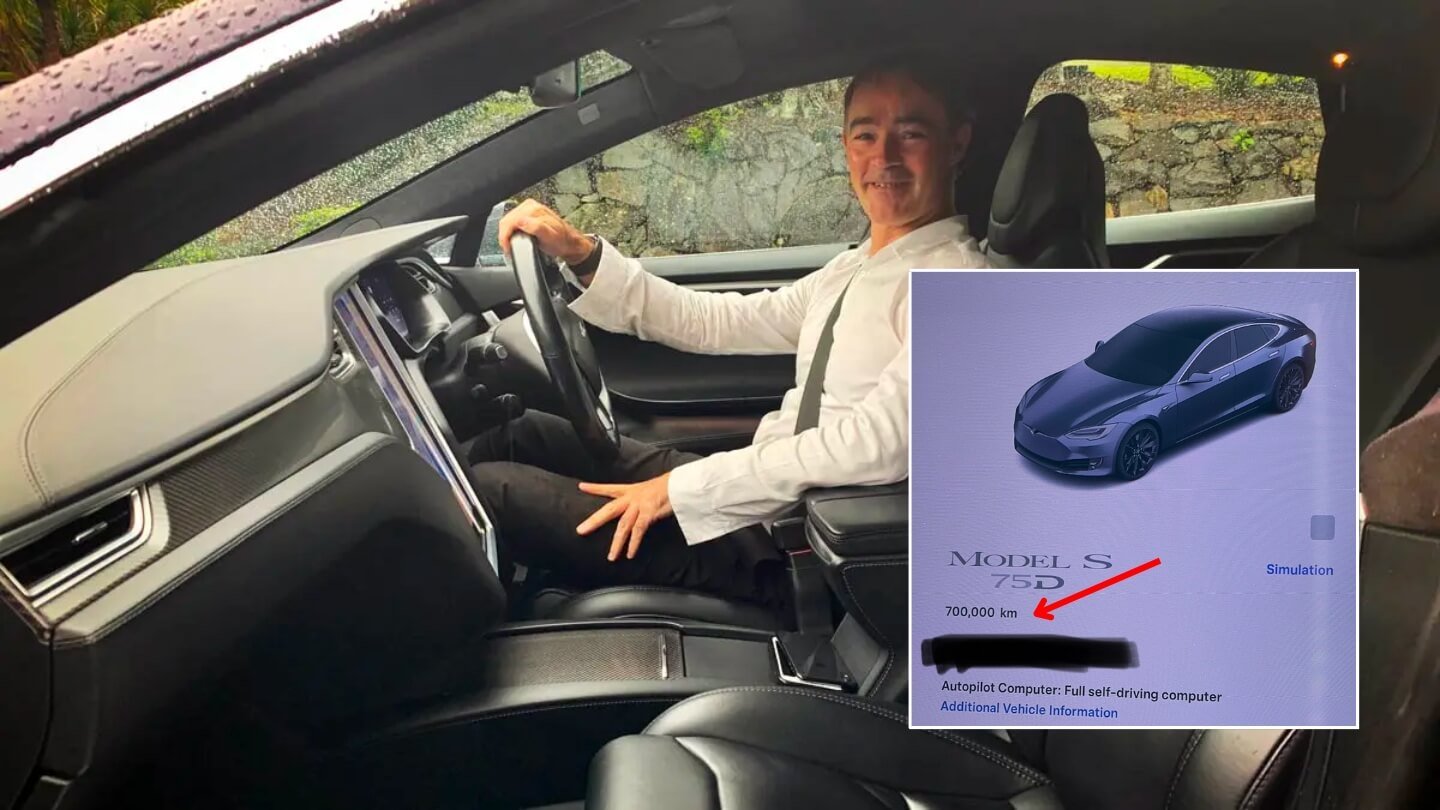
Table of Contents
700,000 KM Tesla Model S Journey
In July 2021, Nigel’s Tesla Model S crossed an impressive 400,000 km, gaining attention for its remarkable durability, a feat uncommon among traditional combustion engine vehicles.
Just a few days back on 24 January, Nigel Raynard treated the Tesla community with an update on his old 2021 Twitter post. He captioned the post as “Little update” on the TeslaStars page and proudly shared a snapshot of his odometer clocking 700,000 kilometers.
"Impossible:" Tesla Model S does 400,000km on one set of brake pads
🚗🔋⚡️🤖🤩👌🏻#EV #RoboCars https://t.co/b3bYcq5zJ5
— TeslaStars✨🇺🇦🕊❤️👀 (@TeslaStars) July 3, 2021
The proud owner of a 2018 Tesla Model S 75D, Nigel doesn’t just clock impressive distances; he also operates an airport pick-up business in the vibrant Byron Bay/Ballina region alongside his partner, Louise.
This resilient Tesla Model S serves as a reliable asset in Nigel’s car rental company, Byron Bay Luxury Tesla, clocking an average of 10,000 km per month over the last 30 months.
In his “little” post, Nigel not only highlighted the sheer longevity of his electric ride but also shed light on the jaw-droppingly low running costs he enjoys.
Little update @BridieEV pic.twitter.com/dDo7rylb4x
— Unique Images Australia (@UniqueImagesAus) January 24, 2024
He is prompt to engage with Twitter users, and they call him a hero, one Twitter user even asks if he ever gets out of his car to which he jokingly says, “Yeah every day!”
He replies in the same fun:
“Yeah everyday, but unfortunately straight into the solar fed Y performance to keep the tyre shops in business.”
Another user @DXM00 couldn’t resist asking about the battery degradation to which he replied that he has been lucky with his Tesla. Following an error code on his Tesla as 666,666 km, he was able to replace the battery under warranty. If not the luckiest Tesla owner or what!
He goes on to share another picture of the brake pads when asked if he was still running on the original brake pads which he replaced at 460,000 km.
Nigel Raynard’s journey isn’t just about racking up miles; it’s gentle proof that electric vehicles can bring practicality, sustainability, and genuine excitement to their owners.
Dieselgate Scandal And Choosing Tesla
Nigel Raynard’s decision to dive into the world of Tesla and purchase a Model S stemmed from a profound realization of environmental responsibility. He got inspired by a documentary series titled “Dirty Money,” specifically an episode called “Hard NOx” highlighting the Dieselgate scandal.
Nigel became acutely aware that it wasn’t just Volkswagen involved; many automakers were prioritizing production efficiency over ethical practices.
Nigel’s decision to go for a Tesla was influenced by a tough year, especially losing his mom to cancer. Watching her struggle with health made him realize the importance of clean air. The Dieselgate scandal, where companies denied their impact on air quality, hit close to home for Nigel.
This personal connection motivated him to make a conscious choice opting for a Tesla Model S as a step toward better air quality and overall well-being.
Reflecting on this revelation, he remarked, “I was ready to make a purchase of a second-hand BMW, but after I watched Hard NOx, what was really hitting for me is that although most people discuss carbon and the difference between the footprint of a petrol vehicle, diesel vehicle, electric vehicle, what was more concerning for me was air quality.”
This epiphany shifted his focus from traditional luxury vehicles to the eco-conscious choice of a Tesla Model S.
Surprisingly, beyond 200,000 kilometers, a mid-sized electric car exhibits a carbon footprint approximately 30% smaller than its diesel combustion engine counterpart. But if the EV uses only green electricity this further escalates to 65% according to a calculation done by BMW Group.
Tesla Model S Repairs & Maintenance
Nigel had to get a new battery pack at 666,666 km after an error popped up. Tesla offered him a sweet deal because of their warranty – a new and bigger battery or a warranty replacement.
With an 8-year warranty and unlimited kilometers, Nigel had options. Considering he saved about $20,000 every year on service and fuel costs, he went for the warranty-covered 75 kWh battery pack, even though a bigger one was on the table.
With this new battery he has already driven another 40,000 kilometers since then, and what’s amazing is that the brake pads he changed at 460,000 km are still holding up strong. These brake pads are enough to last until he hits around 900,000 km.
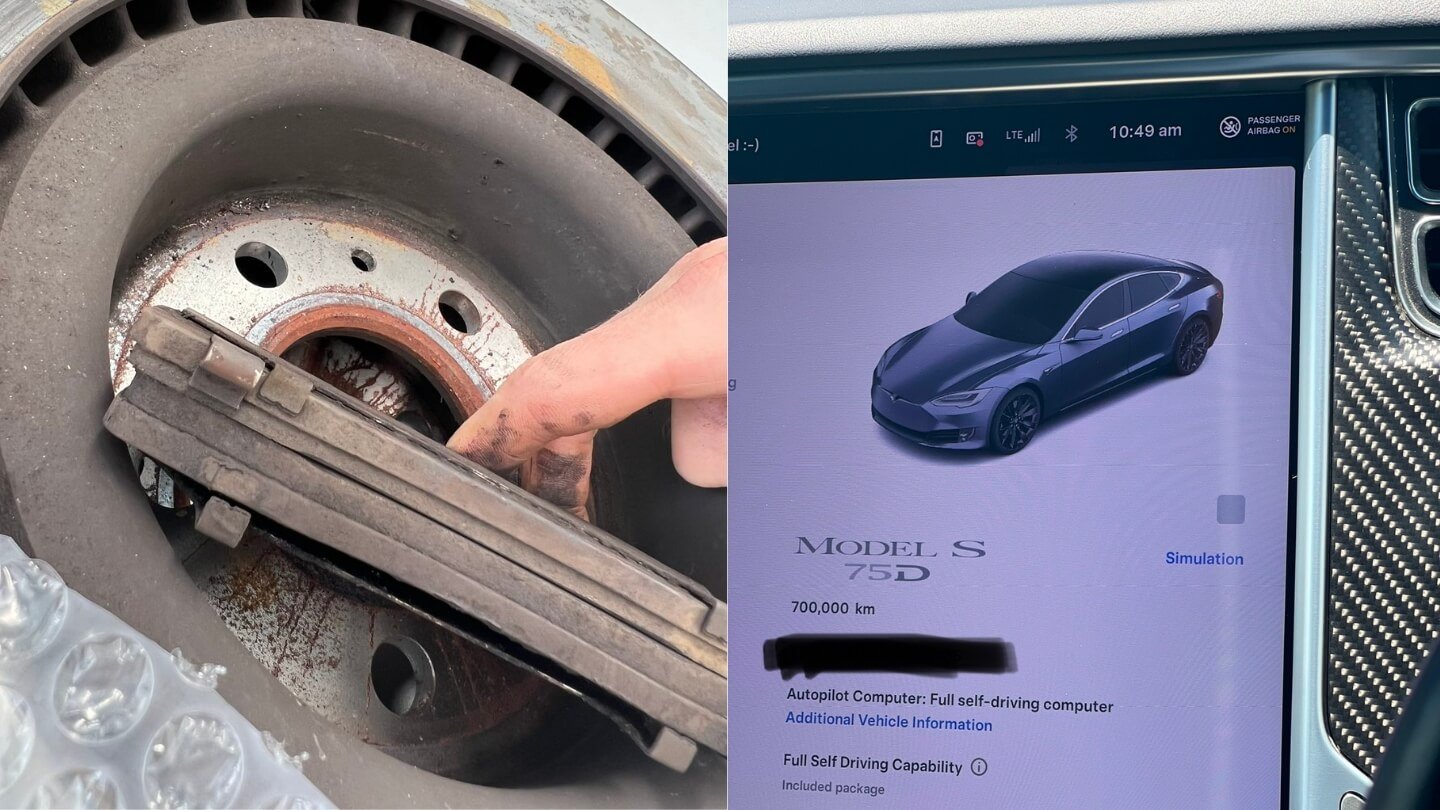
Since buying the car in 2018, Nigel’s clever choices have saved him and his small business a whopping $120,000 over six years.
Tesla EVs To Do 1 Million Miles Each
As Nigel Raynard approaches six years of ownership of his Tesla Model S since August 2018, the remarkable condition of his vehicle defies the extensive daily use, having covered nearly 400 kilometers each day. Despite the rigorous usage, the Model S retains its pristine appearance, challenging common perceptions about wear and tear.
We also covered in an earlier article how Hansjörg Gemmingen, a German Tesla owner surpassed the one million miles mark in his 2014 Model S, further exemplifying the enduring quality of Tesla’s electric vehicles.
With only three battery replacements and minimal servicing costs, his story sure shows the transformative potential of electric vehicles, challenging traditional notions of vehicle lifespan and durability. Read more on it here.
Tesla Model S Hits 1.2 Million Miles with 14th Motor and 4th Battery Replacement
The durability of Tesla vehicles has been a focal point, Elon Musk too said in 2019 that the Tesla Model 3’s body and drive unit can do 1 million miles (1.6 million km) without a problem.
Musk also claimed that the battery can last up to 500,000 miles (800,000 km), emphasizing how robust and long-lasting Tesla’s electric vehicle technology could be. Moreover, Tesla’s battery packs are designed for 1 million miles of operation.
Notably, battery suppliers like CATL now offer warranties up to 800,000 km, and Gotion High-Tech announced a groundbreaking battery pack set to last up to an astonishing 2 million km, equivalent to 130 years of average Australian driving.
Big Battery Big Future
In the ever-evolving landscape of sustainable energy, Tesla’s future plans for big batteries emerge as a ground-breaking stride towards reshaping how miles will rack up in the future. Nigel’s journey is like a road trip into the future, proving that electric cars, especially Teslas, can go the distance while keeping costs low.
Since the Model 3 was only introduced in the US in 2017 (and in Australia in 2019), and people don’t usually drive more than 15,000 km in a year, most Teslas haven’t hit 200,000 km yet.
Seeing electric vehicle (EV) batteries from 2018, like the one in Nigel Raynard’s Tesla Model S, go way past 650,000 km is a good sign. Strongly suggesting that newer EVs being made today could easily reach over a million kilometers.
If EVs can last that long, it’s like having to buy 5-10 regular cars for the same amount of driving. This important fact isn’t really considered in most studies comparing EVs and regular cars.
We would need more time to gather real-world data on how long the batteries last. But, here’s some good news – with millions of Model 3s and Ys out there, there haven’t been any reports of the batteries wearing out early.
This suggests that electric cars might last 4-5 times longer than regular cars, which usually go for around 250,000 km before running into issues. So, it looks like electric cars could be on the road for a much longer time!
Also, people haven’t fully realized how much value an EV still has even after hitting 200,000 km. Even though battery tests show they can be charged over 5000 times, it might take a few more years for everyone to realize just how tough and long-lasting electric cars are becoming.
The way we think about how cars last and keep their value is changing, thanks to EVs.
Bottomline
The world is continuously changing at a steadfast speed, and with technology being obsolete faster than your coffee getting cold, such longevity news brings utmost relief. One single Tesla doing over 700,000 in its lifetime explains how amazing the EVs are, and without buying a new one is amazing in itself.
That’s like driving around 400 kilometers every day, and his car still looks new.
Nigel made smart choices, like picking a Tesla. He also got a new battery under warranty, and now his car is on its second set of battery packs and brake pads. That’s pretty cool because most cars would need a lot more fixing by now. Nigel’s story shows that electric cars, like Teslas, can last way longer than regular cars.
With more electric cars hitting the roads and lasting a really long time, it seems like they’re changing how we think about cars and how they stay valuable. What do you think about it? Would you like your car to cross a million mark?


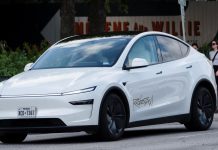
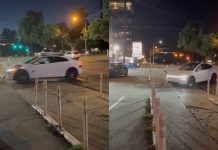
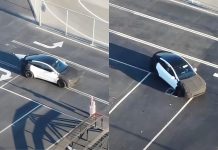
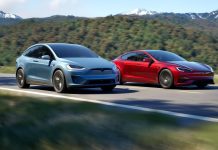








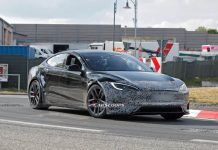
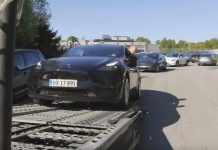

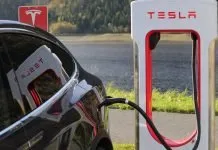

I am only two years in to my first Tesla and I am loving it. I am looking forward to seeing how far I can go on my first battery. I am very glad that I picked a TESLA MODLE 3.